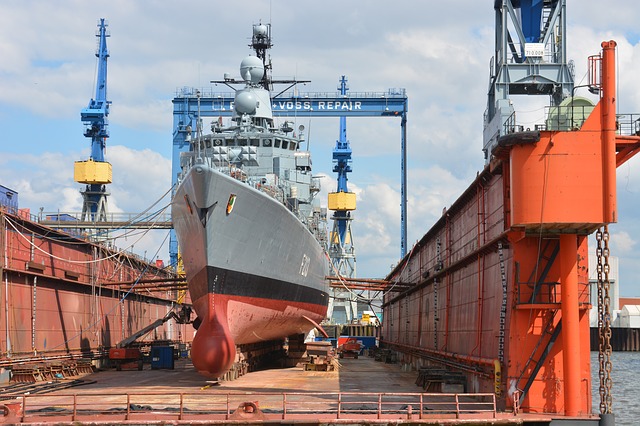
Large boats are manufactured and repaired in a shipyard
A shipyard is an establishment dedicated to the construction and repair of ships . The term comes from splinter , which is a fragment of wood .
Construction and repair
The origin of the concept is linked to the fact that the first boats were made of wood . Therefore, numerous splinters were generated in the sites destined for its development and restoration .
Shipyards are built next to navigable rivers or seas . In this way, the access of ships to the place and their exit to the navigation lanes is facilitated.
All types of ships can be repaired or built in a shipyard, whether intended for the transport of passengers or the transfer of goods . From large commercial ships to vessels for military use, including yachts and recreational boats, all water vehicles that have a certain structure are born in shipyards.
In the shipyards there are multiple dependencies. The hull is built on the steps , while tasks such as cutting, polishing and welding of plates and the manufacture of mechanical devices and machines are carried out in the workshops . The offices, meanwhile, allow specialists to carry out the projection of the ship, with all the necessary calculations.
Origins
Each country has long had its own shipyards to satisfy its military and merchant needs . Particularly those whose maritime trade is relevant to their economy , because otherwise they would depend on the services of others, something that would negatively impact their income.
In the Middle Ages , for example, those of the three Italian cities Pisa, Genoa and Venice stood out in particular. Later, in the middle of the 13th century, the shipyards of Seville appeared, in what was one of the biggest bets on the naval industry on the European continent; Its surface could be compared to that of the Venetian naval base known as the Arsenal . Other shipyards that went down in history are those of Blanes, Arenys, Mataró, Barcelona, Tortosa and Sitges, all belonging to the kingdom of Aragon.
As mentioned above, shipyards were also built in some cities with navigable rivers. Such was the case of Deptford and Woolwich , in the United Kingdom, where King Henry VIII was behind its foundation in the early 16th century. In fact, those in Seville also belong to this group, since they were built on a large esplanade that ended next to the Guadalquivir River .
Spanish municipality
As its proper name, El Astillero is also a town and municipality in Cantabria, the Spanish autonomous community. To locate it geographically, the Solía, Astillero and Carmen estuaries , which are located around it, can be taken as a reference. It is also surrounded by the municipalities of Piélagos, Camargo, Medio Cudeyo and Villaescusa, among others.
Its name is related to the previously defined concept, since it was named this way because the shipyards that have served the Port of Santander since the 16th century were located there, and that continue to be active today.

The name "shipyard" is due to the fact that the first ships were made of wood
An interesting fact regarding this municipality is that different species of migratory birds can be observed throughout the year, thanks to the formation of extensive wetlands that take place at the confluence of the coast and the estuaries . Since it is located in the bay area, its climate is temperate, with moderate rainfall and does not present considerable climatological fluctuations.
Another meaning
The notion of shipyard, on the other hand, is used to name a hanger on which spears and pikes are placed and the warehouse that allows the storage of timber (pieces of wood).
